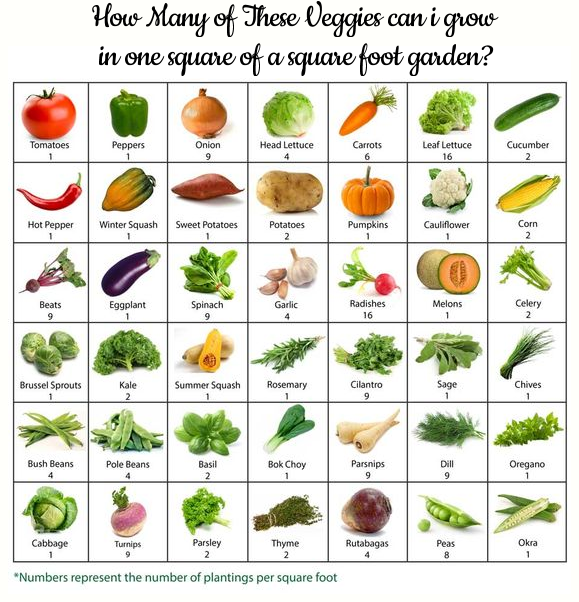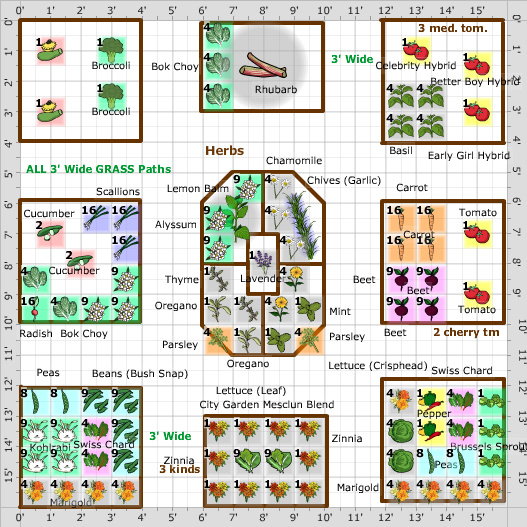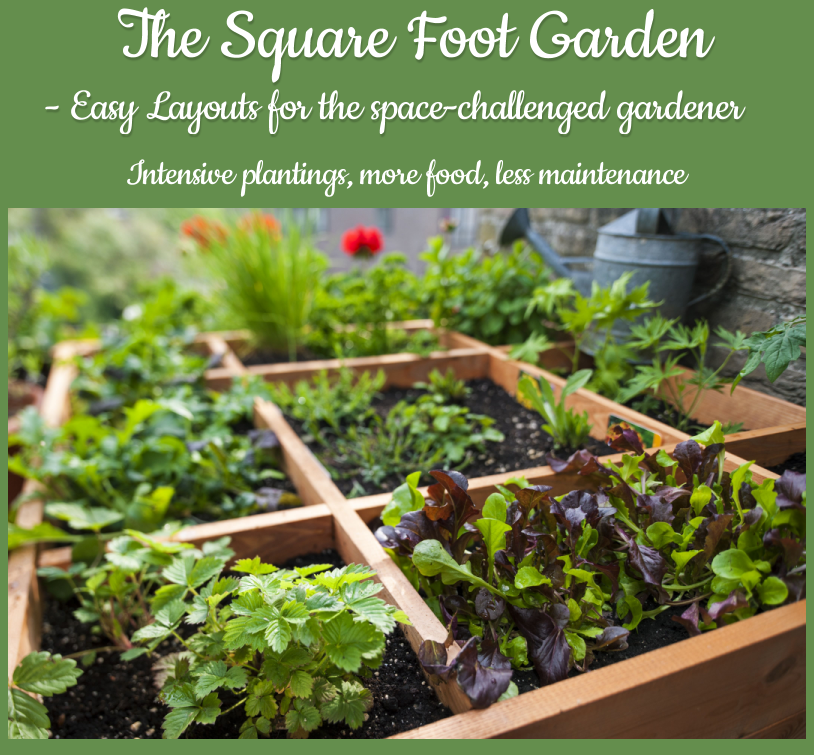 |
|
Square
foot gardening is a simple method of creating small, orderly, and highly
productive kitchen gardens. Seeds or seedlings of each kind of vegetable are planted in one or more squares, at a density based on plant size (e.g., you’d plant about 16 radish seeds per square, but you would plant only one tomato plant). Since there are no paths, there is no wasted space, and the soil in the bed stays loose because you never step on it. Your square foot garden can be as rustic or as formal as you like. It will look clean, tidy and organized, and you can plant flowering plants within or around it, or add decorative trellises in the squares for vining veggies. Growing Nasturtiums and Marigolds around the gardens will repel damaging insects. Leave the wood unstained or unpainted, and make sure you aren't using pressure treated wood or stains that are not food safe. Cedar planters are nice, and you can stain or paint them to weatherproof for winter. I use a food safe cedar finish. If you use paint, be sure it is exterior grade, and food grade. If you are just painting the outside of the planters, you can use normal exterior paint. All surfaces that touch the soil or plants must be painted or stained with food safe paints and stains. |
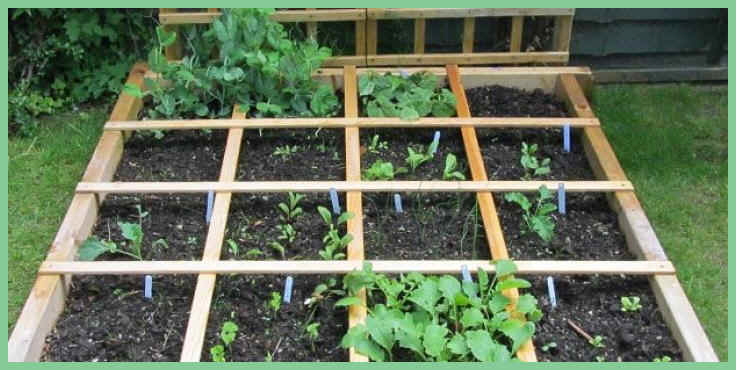 |
|
High yields: Intensive planting means you'll harvest a lot from a small space, so it's ideal for gardeners with limited garden space. Fast set-up: Square foot gardening is a quick way to start a new garden, so it's great for beginners. You can place your raised bed anywhere - even over grass or pavement - allowing you to build, fill, and start planting in a just few hours. You only need to prepare the planting areas, not the paths, so it takes a lot less time and effort. Minimal regular maintenance: Since the garden is small, and you have only a few specific tasks to do on any given day, you only need to spend a few minutes planting, maintaining, and harvesting at any time. Less weeding: If you build a square foot garden filled with soilless mix and compost, you won't have weeds to pull for the first season. Weeds will become more common over time as seeds blow or fall into the bed. One advantage of densely planted crops is that they can form a living mulch and can also prevent weeds from establishing or even germinating. Also, natural insect repellent methods such as companion planting (e.g. planting marigolds or other naturally pest-repelling plants) become more efficient in a close space, which may reduce the need to use pesticides. The large variety of crops in a small space also prevents plant diseases from spreading easily. More Frequent Watering: All plants in planters need more frequent watering than those in the ground. You will save money on water because you are watering a spot, not an entire landscape. You can run drip soaker hoses for even more conservation. Raised bed gardens, or elevated beds (on legs) are best. If building your own, make your beds at least 12 inches deep, if planting above ground. If planting your raised beds over soil, lay down landscape fabric to block weeds, and make the beds at least 8 inches deep, and the plants will find their way to the soil and grow deeper. Elevated raised beds make weeds and destructive garden pests (rabbits, etc.) almost non-existent. The raised beds on legs are perfect for those who cannot or do not wish to bend or dig. The prefab raised beds are available with the square foot sections already marked out and separated by pieces of wood, so it's easy for beginners. |
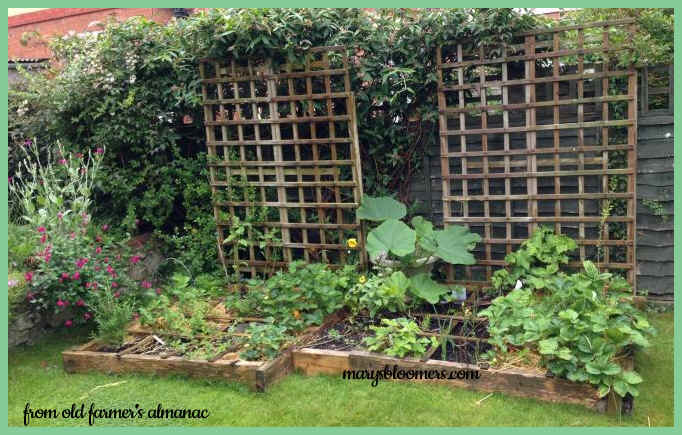 |
| This beginner layout is
perfect for someone with minimal time or space to garden. Choose what
you love to eat. I grow mostly my plant clone transplants and seedlings,
and not from seed. I like my plants to have a good head start. Sowing
seed is easy in a square foot garden, and so is thinning out. I just
prefer a hardier start to my gardens. Naturally, any melons, peas,
cucumbers and squash I grow are grown from seed.
To graduate to a larger square foot garden, use the planting guides below, and multiply your squares. If you make multiples, be sure to leave a path between sections of squares for working the garden and for harvesting. Leave room for working and navigating the garden. Or just lengthen the size of the garden and don't add squares for width.
To download a free .pdf format file of the layouts, click here. |
 |
Once you've tried these easy layouts and successfully harvested your first crops, you are ready to tackle any size or type of square foot garden. You now know which veggies you planted too close or where you had room to plant more plants. You also learned what variety of plant might have been too large for its square. You can create an entire herb, culinary and medicinal garden using this method, as well. |
Popular veggies in the garden shown on the chart below. It shows you how many plants to plant per square foot of your favorite veggies..
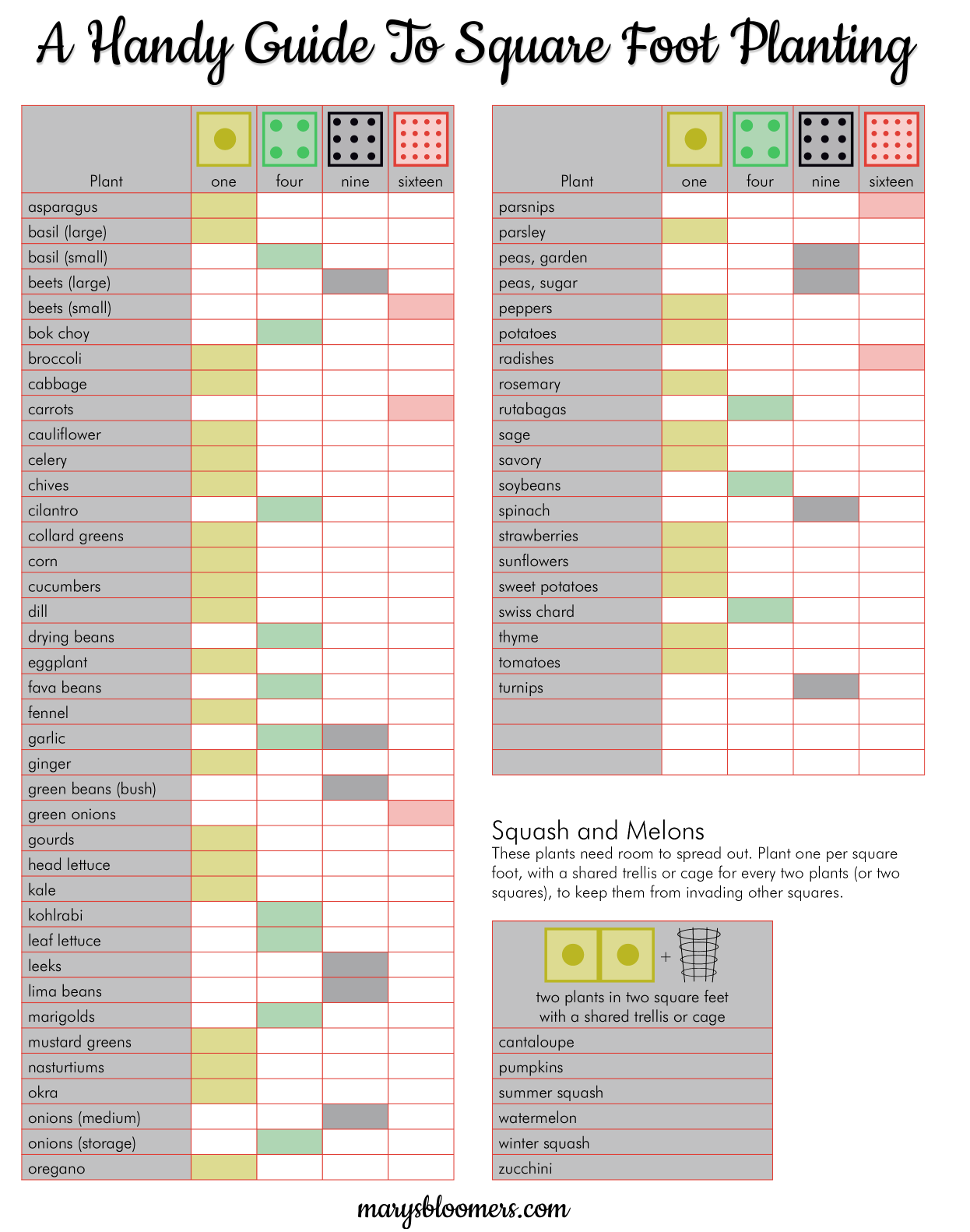 |
||||||||||||||||||||||||||||||||||||||||||||||||||||||||||||||||||||||||||||||||||||||||||||||||||||||||||||||||||||||||||||||||||||||||||||||||||||||||||||||||||||||||||||||||||||||||
|
Below you will find a garden design
layout for an approximately 16x16 square foot food and herb garden, big
enough for a family. Feel free to choose the varieties of plants that you would love to eat, rather than the suggested plant varieties.
To download a free .pdf format file of this page and the layouts, click here. Elevate
your garden and grow it anywhere. Use these beautiful planters to
eliminate digging,
Sources
|

